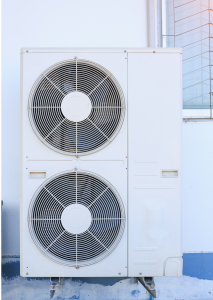Demand momentum robust, seen steady growth in the order book – Blue Star

Update on the Indian Equity Market:
On Wednesday, NIFTY closed in the green at 18,212 (+0.9%). Among the sectoral indices, REALTY (+1.9%), OIL & GAS (+1.5%), and AUTO (+1.5%), closed higher while PHARMA (-0.2%) and HEALTHCARE (-0.2%) closed in the red. M&M (+4.5%), BHARTIARTL (+3.7%), and INDUSINDBK (+2.8%) were the top gainers. TITAN (-1.6%), TATASTEEL (-1.5%), and SHREECEM (-1.1%) were among the top losers.
Excerpts from an interview of Mr. B Thiagarajan, MD, Blue Star with Economic Times dated 6th January 2022:
- Right from August onwards, the company has had a good festival season, the demand held up till the New Year sale in quite a few markets. Building up to Sankranti, the sales are good, however, the spike in COVID cases can have some impact on the retail movement, and the company doesn’t expect much loss of sales as it is peak winter season.
- The company had taken 3 price hikes in CY21 and it has no plans of further price hikes on the back of stabilising commodity prices, improved product portfolio, and efficient supply chain. The company expects commodity prices to be stable over the summer season.
- The company has improved its supply chain efficiency with regards to insulating itself from shocks by ordering semiconductors till FY23 in advance, blocking raw material inventory for 6 months instead of its usual policy of 3 months. The supply chain challenges continue but it has somewhat eased and the company is fully secured for the summer season.
- The company has seen robust demand in the room air conditioner industry owing to excellent momentum from tier-3, tier-4, and tier-5 towns. The penetration in the middle class is fast improving.
- PLI has become an important enabler to create a huge component ecosystem. To earn the PLI, the industry has to improve its revenue which means the competition will be intense and prices will come down while the scale builds up. It is a question of maintaining profitability by building scale.
- IT, ITES workforce are returning to offices and therefore air conditioning demand is coming. The biggest demand is from the manufacturing sector. Huge expansions are taking place thanks to the PLI in various sectors the government has offered. Capacity expansion is leading to new factories coming up, thus the company expects a huge demand for industrial cooling.
- There are many social infrastructure projects like the metro railways or water-related projects and the resulting order book is at a record high at this point. It is very encouraging as far as the B2B segment is concerned and the cash flow is also good indicating encouraging signs for the segment.
- Once in two years, energy labels are getting changed and therefore people will have to buy higher energy efficiency products. But the demand for five-star ACs is not going up significantly because the consumers are predominately first-time, middle-class buyers, who are more price-driven.
- However in the B2B segment, the real hot selling products are highly energy-efficient like VRB (Vanadium redox battery) or the VFD (Variable Frequency Drive) driven, as manufacturers are more focused on setting up green buildings, platinum rated, and gold rated factories.
Asset Multiplier comments:
- We think the healthy order book, expansion of business in the B2C segment, and PLI Investments will be the key positives for Bluestar but the supply chain and increased commodity prices may impact profitability.
- Healthy growth opportunities in Industrial Manufacturing induced Capex and the government’s boost for social infrastructure will drive growth for Bluestar.
Consensus Estimate: (Source: Market screener website)
- The closing price of Bluestar was ₹ 1,006/- as of 12-January-2022. It traded at 60x/37x/30x the consensus Earnings per share estimate of ₹ 17/27/33/- for FY22E/FY23E/FY24E respectively.
- The consensus average target price is ₹ 1,025/- which implies a PE multiple of 31x on FY24E EPS of ₹ 33/-.
Disclaimer: “The views expressed are for information purposes only. The information provided herein should not be considered as investment advice or research recommendation. The users should rely on their own research and analysis and should consult their own investment advisors to determine the merit, risks, and suitability of the information provided.”
